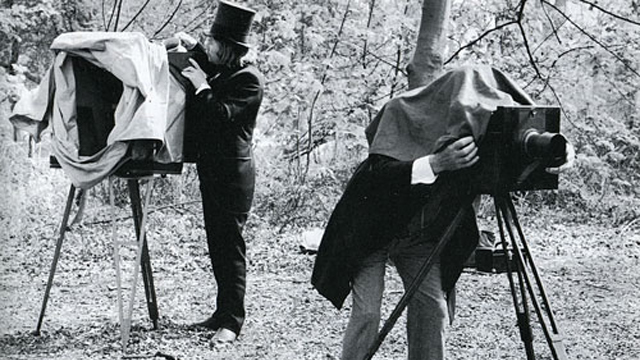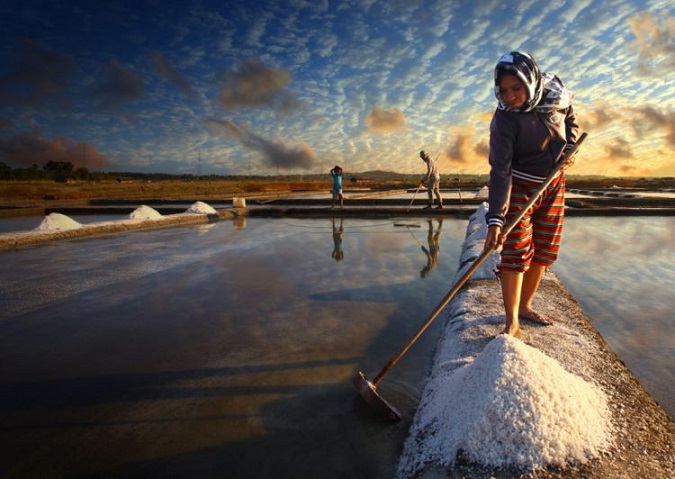History Of Photography
Development Of chemical photography
History of photography: For centuries images have been projected onto surfaces. The camera obscura and the camera lucida were used by artists to trace scenes as early as the 16th century. These early cameras did not fix an image in time; they only projected what passed through an opening in the wall of a darkened room onto a surface. In effect, the entire room was turned into a large pinhole camera. Indeed, the phrase camera obscura literally means "darkened room," and it is after these darkened rooms that all modern cameras have been named.
Development of chemical photography The first photograph is considered to be an image produced in 1826 by the French inventor Nicéphore Niépce on a polished pewter plate covered with a petroleum derivative called bitumen of Judea. It was produced with a camera, and required an eight hour exposure in bright sunshine. However this process turned out to be a dead end and Niépce began experimenting with silver compounds based on a Johann Heinrich Schultz discovery in 1724 that a silver and chalk mixture darkens when exposed to light.
Niépce, in Chalon-sur-Saône, and the artist Louis Daguerre, in Paris, refined the existing silver process in a partnership. In 1833 Niépce died of a stroke, leaving his notes to Daguerre. While he had no scientific background, Daguerre made two pivotal contributions to the process. He discovered that by exposing the silver first to iodine vapor, before exposure to light, and then to mercury fumes after the photograph was taken, a latent image could be formed and made visible.
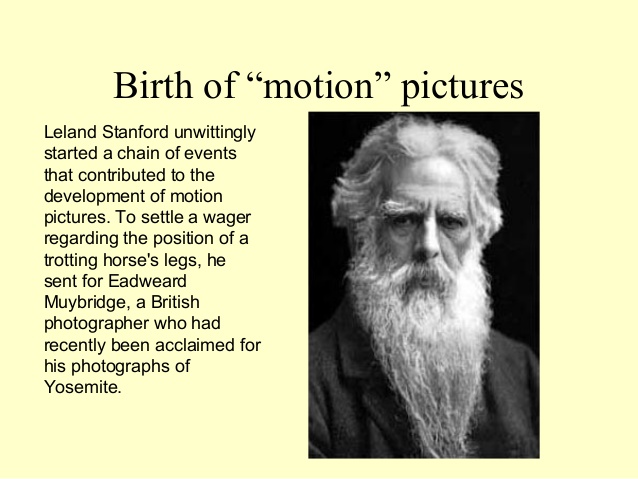
By then bathing the plate in a salt bath the image could be fixed. In 1839 Daguerre announced that he had invented a process using silver on a copper plate called the Daguerreotype. A similar process is still used today for Polaroids. The French government bought the patent and immediately made it public domain. Across the English Channel, William Fox Talbot had earlier discovered another means to fix a silver process image but had kept it secret.
After reading about Daguerre's invention Talbot refined his process, so that it might be fast enough to take photographs of people as Daguerre had done and by 1840 he had invented the calotype process. He coated paper sheets with silver chloride to create an intermediate negative image. Unlike a daguerreotype a calotype negative could be used to reproduce positive prints, like most chemical films do today. Talbot patented this process which greatly limited its adoption. He spent the rest of his life in lawsuits defending the patent until he gave up on photography altogether. But later this process was refined by George Eastman and is today the basic technology used by chemical film cameras. Hippolyte Bayard also developed a method of photography but delayed announcing it, and so was not recognized as its inventor.
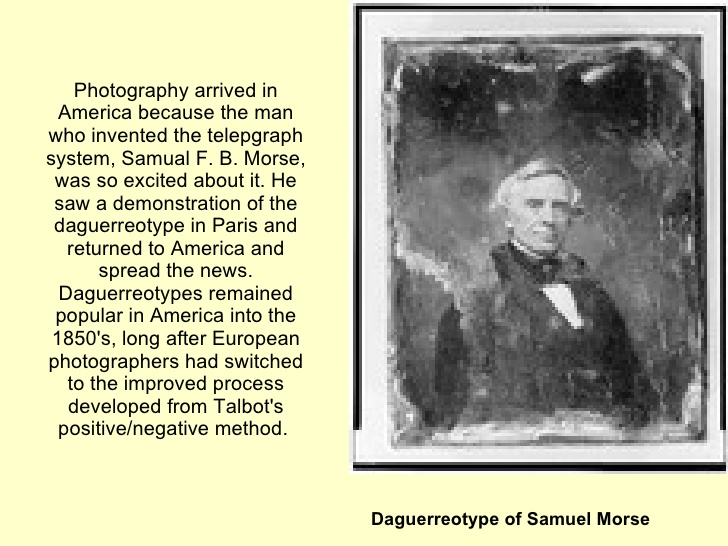
In 1851 Frederick Scott Archer invented the collodion process. It was the process used by Lewis Carroll. Slovene Janez Puhar invented the technical procedure for making photographs on glass in 1841. The invention was recognized on July 17th 1852 in Paris by the Académie Nationale Agricole, Manufacturière et Commerciale. The Daguerreotype proved popular in responding to the demand for portraiture emerging from the middle classes during the Industrial Revolution.
This demand, that could not be met in volume and in cost by oil painting, may well have been the push for the development of photography. However daguerreotypes, while beautiful, were fragile and difficult to copy. A single photograph taken in a portrait studio could cost US$1000 in today's money. Photographers also encouraged chemists to refine the process of making many copies cheaply, which eventually led them back to Talbot's process. Ultimately, the modern photographic process came about from a series of refinements and improvements in the first 20 years.
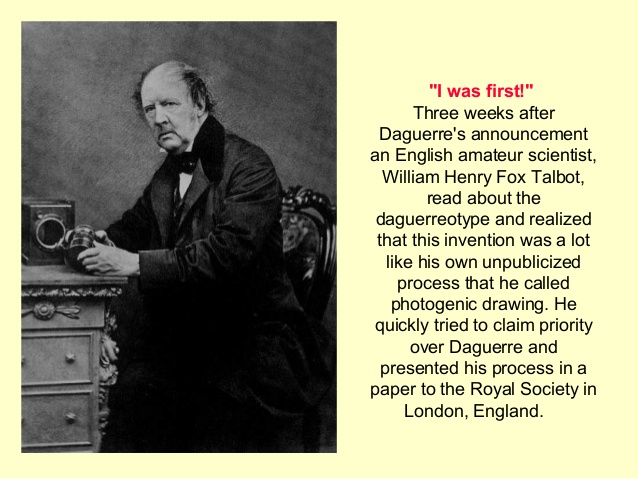
In 1884 George Eastman, of Rochester, New York, developed dry gel on paper, or film, to replace the photographic plate so that a photographer no longer needed to carry boxes of plates and toxic chemicals around. In July of 1888 Eastman's Kodak camera went on the market with the slogan "You press the button, we do the rest". Now anyone could take a photograph and leave the complex parts of the process to others. Photography became available for the mass-market in 1901 with the introduction of Kodak Brownie.
The Color Process Since then color film has become standard, as well as automatic focus and automatic exposure. Digital recording of images is becoming increasingly common, as digital cameras allow instant previews on LCD screens and the resolution of top of the range models has exceeded high quality 35mm film while lower resolution models have become affordable. For the enthusiast photographer processing black and white film, little has changed since the introduction of the 35mm film Leica camera in 1925.
We Are Helping 1000 Businesses Amplify Their Online Presence
All About Photography Photography is the art of reproducing pictures of people, objects or places in their exact likeness. These images can be transferred on any photosensitive material. Photography includes taking and printing pictures. The backbone of photography, is the camera, the instrument or device that works on the principle of optics. The camera and photographic techniques have undergone phenomenal changes since the time the first camera was made. The earlier model did not contain the film; instead, it had a small light-shield box with lens and translucent screen on either side. The image that traveled through the lens was stored on the screen. Known as 'camera obscura,' it was no more than a sketching device for artists.
Then scientists discovered the quality of silver nitrate that changes its color when exposed to light. This was the beginning of photogram, a method of making permanent images. Objects are placed on the paper dipped in silver nitrate and expose it to the sunlight. After sometime the area covered under the object stayed white while the rest of the space turned black. However, the image formed was temporary, so the method did not last long.
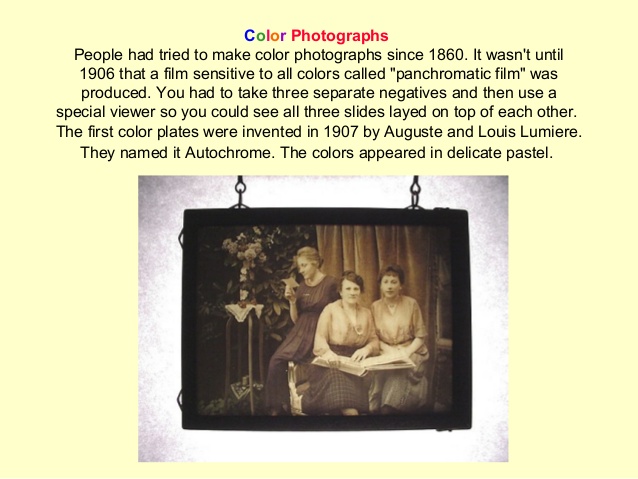
Over the centuries, the principles, the method and the material used in photography went through many changes. After experimenting with various methods like Daguerre and calotype process, finally collodion, or the wet plate technique was universally accepted. Modern photography has given a totally new meaning to the entire perception of life and privacy. Photography has made it possible to capture and preserve special moments, in private and in public life.
History became more authentic with pictures, and photographs served as evidence in many cases. People made their family tree in their photo albums. Suddenly life was so much fun and meaningful. With the tremendous technological advances in the art of photography, it is no more just fun and frolic but has acquired the dimensions of a full-fledged profession.
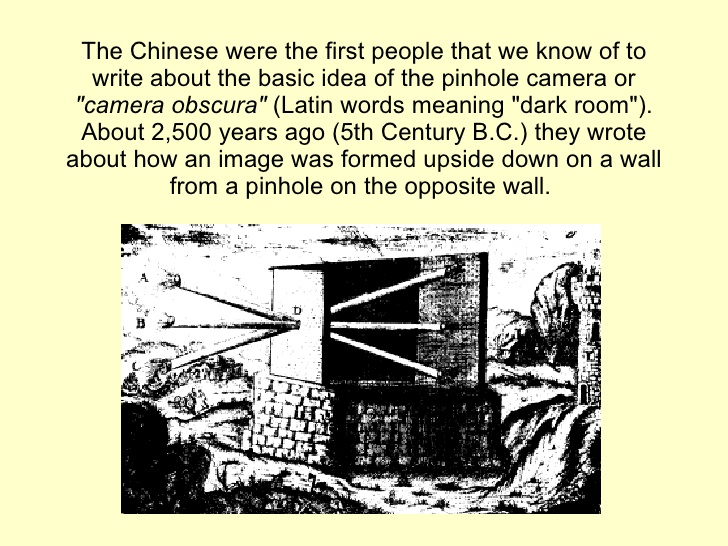
Photography has many branches and types, such as:
- Aerial photography is the art of taking photographs from the air.
- Art photography is devoted to beautiful pictures for the sake of beauty only.
- Studio or advertising photography is dedicated to promotion of products and institutions.
- Photojournalism takes pictures of events to support the news story and to create awareness among the people.
FrizeMedia Ghana SEO SEM Digital Marketing Proposal
The Best And Top Digital Marketing And SEO Services In Ghana
- Outdoor and travel photography is focused on taking pictures of landscapes and natural places.
- Sports photography records images of the sporting events and games that take place in the world.
- Some types of photography like the macro and scientific or close up photography are restricted to specific fields and are not widely known. The charm of photography lies as much in the end product as in the process of taking pictures. Looking at an album is like taking a trip down memory lane; it makes us feel highly nostalgic and emotional.
Understanding Photographic Terms
InternetBusinessIdeas-Viralmarketing Home Page
Tweet
Follow @Charlesfrize


